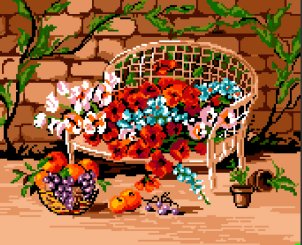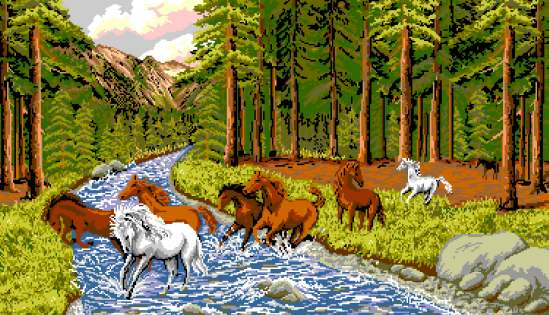
In 1662 , Louis XIV purchased the Tapestries manufactory and there Colbert united all the royal craftsmen, creating a royal and furniture works. Charles Le Brun was director and chief designer from 1663 to 1690. The Tapestries was temporarily closed from 1694 to 1697, after which the works specialized in gobelin. Both low- and high-warp weaving were done until about 1825, when the low-warp power frames were moved to the manufactory of Beauvais; they were returned to Gobelins after World War II. The factory has always been noted for excellence of materials, dyes, and workmanship; it originated the exquisite its blue. The Gobelin as an art work was founded as a dye works in the mid �15th century by Jean Gobelin. A tapestry works started by two Flemish weavers, Marc de Comans and Francis de la Planche , called to France by Henri IV in 1601 , was later added.
In 1662 , Louis XIV purchased the Tapestries manufactory and there Colbert united all the royal craftsmen, creating a royal and furniture works. Charles Le Brun was director and chief designer from 1663 to 1690. The Tapestries was temporarily closed from 1694 to 1697, after which the works specialized in gobelin. Both low- and high-warp weaving were done until about 1825, when the low-warp power frames were moved to the manufactory of Beauvais; they were returned to Gobelins after World War II. The factory has always been noted for excellence of materials, dyes, and workmanship; it originated the exquisite its blue.

Tapestry is well know from Antiquity mostly represented by Chinese silk texture (T'ang dynasty textures, Egypt and antic Greek textures comes as a prove). Tapestry flourished in civilizations greatest moments, through out the years and they reflected civilization's aesthetics inclinations.
In the Middle Ages, tapestry had a purely utilitarian function. Tapestries were originally designed to protect medieval rooms from damp and cold weather or to cover austere walls of big castles or to insulate big rooms in more comfortable quarters. In these early tapestries, isolated figures or compact groups stood out against a background that was generally plain or embellished with plants motifs or flowers, those are called � mille fleurs �
Tapestry became beside painting, sculpture and architectures one of the major visual art forms. . By 1500, Flanders, especially Brussels and Bruges, had become the chief places of production.


Today, we have milions and millions of gobelin art users and collectors around the Globe in many many homes and offices.
